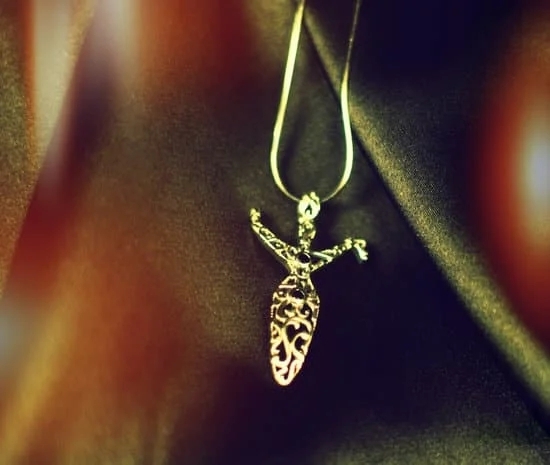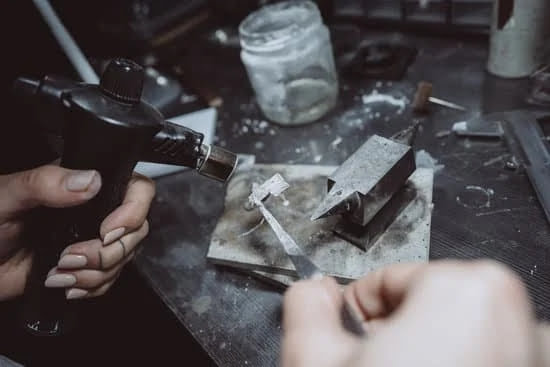Handmade jewelry is not only a work of art, but also an investment that requires proper care to maintain its beauty and longevity. In this article, we will explore the step by step process of shining handmade jewelry, highlighting the significance of this practice in preserving the overall appearance and quality of these intricate pieces.
By understanding the materials, cleaning and prepping, polishing, adding finishing touches, maintaining the shine, and avoiding common mistakes, you can ensure your handmade jewelry continues to dazzle for years to come.
When it comes to handmade jewelry, shining is more than just a cosmetic process – it directly impacts the durability and lifespan of the pieces. Properly shining your jewelry not only enhances its visual appeal but also helps prevent tarnishing and deterioration over time.
Whether your handmade jewelry is crafted from precious metals or natural elements like beads and gemstones, it’s essential to follow a specific approach to shining based on the materials used. By learning how to shine handmade jewelry step by step, you can protect your investment and showcase its true beauty.
In the following sections of this article, we will delve into the nuances of shining handmade jewelry, offering practical guidance on cleaning, prepping, polishing techniques for different materials, adding final touches for extra luster, as well as maintenance tips for long-lasting shine. Understanding these steps will help you unlock the full potential of your handmade jewelry collection and keep it looking as stunning as when you first acquired it.
Let’s explore how proper shining can elevate the beauty of your cherished pieces.
Understanding Your Materials
When it comes to shining handmade jewelry, one of the most important factors to consider is the type of materials used in the pieces. Different materials require different approaches to shining in order to achieve the best results. Some common materials used in handmade jewelry include sterling silver, gold, gemstones, and beads. Each of these materials has its own unique characteristics and therefore needs to be treated differently when it comes to shining.
Sterling silver, for example, can easily tarnish over time due to exposure to air and moisture. To shine sterling silver jewelry, one can use a polishing cloth or a silver polish solution specifically designed for this purpose. Gold jewelry also requires special care when shining, as gold is a softer metal and can easily be scratched if not handled properly. Gemstones and beads may have their own specific cleaning and shining requirements based on their individual properties.
It is important for anyone looking to shine handmade jewelry step by step to understand the specific needs of the materials used in each piece. Doing so will ensure that the shining process not only enhances the appearance of the jewelry but also preserves its quality and durability for years to come.
| Material | Shining Method |
|---|---|
| Sterling Silver | Polishing cloth or silver polish solution |
| Gold | Gentle handling and use of gold polish solution |
| Gemstones & Beads | Specific cleaning and shining methods based on individual properties |
Cleaning and Prepping
Choosing the Right Cleaning Products
Before beginning the shining process, it’s crucial to properly clean and prepare the handmade jewelry. The first step is to choose the right cleaning products based on the material of the jewelry. For example, gentle soap and warm water work well for most types of metal jewelry, while a specialized jewelry cleaner may be needed for delicate gemstones. It’s important to research and understand the specific cleaning requirements for the materials used in your handmade pieces.
Gentle Cleaning Techniques
Once you have the appropriate cleaning products, it’s time to start cleaning the jewelry. Using a soft bristle brush or a cloth, gently clean each piece, making sure to reach all crevices and intricate details. Be cautious not to use overly abrasive techniques that could damage the handmade pieces. Take your time with this step as thorough cleaning is essential for achieving a brilliant shine.
Drying and Prepping for Shining
After cleaning, thoroughly dry each piece of jewelry before moving on to shining. Use a clean, soft cloth to carefully remove any excess moisture and ensure that there are no water spots left behind. Once dry, you can also consider using a polishing cloth to further prepare the surface of the jewelry for the shining process. By taking these careful steps in cleaning and prepping your handmade jewelry, you are setting a solid foundation for achieving a standout shine.
By following these step-by-step guidelines on how to properly clean and prep your handmade jewelry for shining, you can ensure that your pieces will look their best. With attention to detail and mindful selection of cleaning products and techniques, you’ll be ready to move on to the next stage of polishing with confidence.
Polishing
When it comes to metal jewelry such as silver or gold, a popular method for polishing is using a jewelry polishing cloth. This specially treated cloth is designed to remove tarnish and dirt from metal surfaces without scratching or damaging the jewelry.
Simply rub the piece gently with the cloth in a back-and-forth motion until it shines. For a deeper clean, you can also use a mild jewelry cleaning solution and a soft-bristled brush to get into hard-to-reach areas.
Gemstone jewelry requires careful consideration when it comes to polishing, as some stones are more delicate than others. For harder stones like diamonds and sapphires, you can use a soft cloth with warm soapy water to gently clean the surface before using a gemstone-specific polishing cloth. However, softer stones like opals and pearls should only be cleaned with a damp cloth and mild soap, avoiding any harsh chemicals or abrasive materials that could damage the stone.
Finally, bead jewelry made from materials like glass, clay, or wood may require different methods for shining. It is important to clean these pieces with a soft cloth dampened with water and mild soap before gently buffing them with another dry cloth to bring out their shine.
In essence, understanding the specific characteristics of each material used in handmade jewelry is crucial when determining how to properly polish and maintain its appearance over time.
| Material Type | Polishing Method |
|---|---|
| Metal (Silver or Gold) | Jewelry Polishing Cloth + Mild Jewelry Cleaning Solution |
| Gemstones (Diamonds/Sapphires vs Opals/Pearls) | Gemstone-Specific Polishing Cloth + Warm Soapy Water |
| Beads (Glass/Clay/Wood) | Soft Cloth Dampened with Water + Dry Cloth Buffing |
Finishing Touches
Adding the final touches to the shining process is crucial in ensuring that your handmade jewelry looks its best. These finishing touches can make a significant difference in the overall appearance and quality of the pieces. Here are some tips on how to add those final touches step by step:
- Inspect for any missed spots: After polishing your jewelry, it’s essential to carefully inspect each piece for any missed spots or areas that may need additional shining. Use a clean cloth to gently buff out any remaining tarnish or dullness.
- Use a jewelry cleaner: Once the polishing is complete, consider using a specialized jewelry cleaner to further enhance the shine of your handmade pieces. Be sure to follow the manufacturer’s instructions and use a soft brush or cloth to apply the cleaner evenly.
- Apply a protective coating: To maintain the shine of your handmade jewelry, consider applying a protective coating such as lacquer or wax. This will help prevent tarnishing and keep your pieces looking beautiful for longer periods. Be cautious when applying the coating and ensure that it is suitable for the specific type of material used in your jewelry.
These final touches are essential for achieving professional-looking results when shining your handmade jewelry. By following these steps diligently, you can ensure that your pieces look their best and stand out with their brilliant shine.
Remember, proper maintenance and care are key to preserving the shine of your handmade jewelry over time. Taking these extra steps will not only enhance the appearance of your pieces but also contribute to their longevity and durability.
By paying attention to these final touches, you can truly elevate the overall look and appeal of your handmade jewelry, leaving you with stunning and radiant pieces that you’ll be proud to wear or showcase.
Maintaining the Shine
Proper Storage
Once you have successfully shined your handmade jewelry, proper storage is key to maintaining its shine. To avoid tarnishing and scratches, it’s important to store your jewelry in a clean, dry place. Consider using individual pouches or soft cloth-lined compartments to prevent pieces from rubbing against each other and causing damage.
Regular Cleaning
Regular cleaning is essential in maintaining the shine of your handmade jewelry. Use a soft, lint-free cloth to gently wipe down your pieces after each wear to remove any oils, dirt, or residue that may dull the shine. For more thorough cleaning, you can use a mild soap and water solution, making sure to dry the jewelry completely before storing it.
Avoid Harsh Chemicals
To maintain the shine of your handmade jewelry, it’s important to avoid exposing the pieces to harsh chemicals such as perfume, hairspray, and household cleaners. These substances can tarnish and corrode certain materials used in handmade jewelry, diminishing their shine over time. Always remove your jewelry before applying any beauty or cleaning products.
By following these maintenance tips for your handmade jewelry, you can ensure that the pieces continue to shine and look their best for years to come. Taking care of your jewelry not only maintains its aesthetic appeal but also preserves its value and longevity.
Common Mistakes to Avoid
When it comes to shining handmade jewelry, there are common mistakes that can occur during the process. These errors can impact the overall appearance and longevity of the jewelry if not addressed properly. Understanding these common mistakes and learning how to prevent them is crucial for achieving a professional and polished look for your handmade jewelry.
One common mistake to avoid is using the wrong cleaning products or tools for specific materials. Different types of metals and gemstones require different care, so it’s important to use products and tools that are suitable for the specific materials in your handmade jewelry.
For example, using abrasive cleaning agents on delicate gemstones can result in scratches and dullness. To prevent this mistake, always research and identify the appropriate cleaning products and tools for each material used in your jewelry.
Another mistake that can occur during the shining process is over-polishing or applying too much pressure when buffing the jewelry. This can lead to excessive wear on the surface of the jewelry, especially for softer metals like gold or silver. To prevent over-polishing, it’s important to follow a gentle and controlled approach when polishing your handmade jewelry. Use light pressure and circular motions to evenly distribute the polish without causing damage to the surface.
Furthermore, neglecting proper drying of the jewelry after cleaning can also be a common mistake. Leaving moisture trapped in crevices or between gemstones can lead to tarnishing, discoloration, or even corrosion over time. To prevent this error, ensure that your handmade jewelry is thoroughly dried after the cleaning process before moving on to polishing. This can be done by using a soft cloth to gently pat dry each piece or allowing them to air dry completely before proceeding with shining.
By understanding these common mistakes and taking proactive measures to prevent them, you can ensure that your handmade jewelry shines beautifully without compromising its integrity.
Conclusion
In conclusion, shining handmade jewelry is a crucial step in maintaining the overall appearance and quality of your pieces. As discussed throughout this article, understanding the materials used in your jewelry and following a specific cleaning and polishing process tailored to those materials is key to achieving the desired shine.
By taking the time to properly clean, polish, and add finishing touches to your handmade jewelry, you can ensure that it not only looks its best but also lasts for years to come.
It is important to remember that maintaining the shine of your handmade jewelry requires ongoing care and attention. Regular cleaning and storage practices can help prevent tarnishing and keep your pieces looking like new. Additionally, avoiding common mistakes such as using incorrect cleaning products or improper polishing techniques will further contribute to the longevity of your jewelry’s shine.
We encourage our readers to try out the step-by-step tips provided in this article to shine their own handmade jewelry. By following these guidelines and incorporating proper maintenance practices into their routine, individuals can preserve the beauty and integrity of their beloved pieces. With dedication and care, anyone can achieve a lasting shine for their handmade jewelry.
Frequently Asked Questions
How Do You Polish Homemade Jewelry?
To polish homemade jewelry, start by cleaning the piece with a mild soap and water. Then, use a soft polishing cloth to gently buff the jewelry in small circular motions until it shines. You can also use jewelry-specific polishing compounds or creams for stubborn tarnish or dullness.
What Do You Need to Polish Jewelry?
When polishing jewelry, you will need a few basic items: a mild soap, water, a soft polishing cloth (microfiber or flannel works well), and optional jewelry-specific polishing compounds or creams. It’s important to choose non-abrasive materials to avoid scratching the jewelry surface.
How Do You Polish Metal Jewellery?
To polish metal jewelry, start by cleaning the piece with a mild soap and water to remove any dirt or grime. Then, use a metal polish specifically designed for the type of metal you’re working with (e.g., silver polish for silver jewelry).
Apply a small amount of polish to a clean cloth and gently buff the metal in circular motions until it shines. Finally, rinse off any remaining polish and dry thoroughly with a soft cloth.

Welcome to my jewelry blog! My name is Sarah and I am the owner of this blog.
I love making jewelry and sharing my creations with others.
So whether you’re someone who loves wearing jewelry yourself or simply enjoys learning about it, be sure to check out my blog for insightful posts on everything related to this exciting topic!





